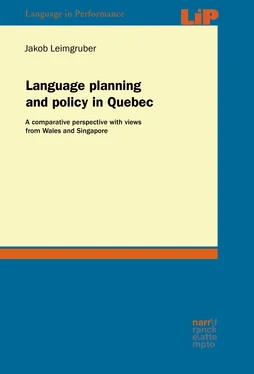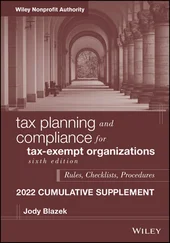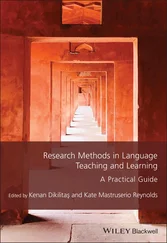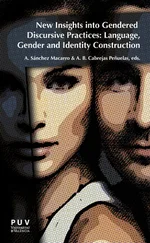Official language policy in New Brunswick exists under several statutory instruments. The first to be passed was the 1969 Official Languages Act, which made both English and French co-official languages and listed a number of fundamental linguistic rights, chief among them that service from the provincial government can be received in the language of choice. This act made New Brunswick the first and only province in Canada to become officially bilingual voluntarily (Manitoba, which, as explained above, was founded as a bilingual province in 1870, had to be reminded of this fact by a Supreme Court decision in 1985). The 1981 Bill 88, the ‘Act recognising the equality of the two official linguistic communities in New Brunswick’, further cemented language rights, with the creation of separate (i.e. parallel) institutions in the cultural, educational, and social sphere. In addition to these provincial laws, the Canadian Charter of Rights and Freedoms (CCRF), a fundamental component of the federal constitution introduced in 1982, guarantees official bilingualism in Canada and New Brunswick (s 16ff), making the province the only one that has its language policy status mentioned in the Constitution. In addition to the two languages being termed official , and the two language communities enjoying equal rights, official bilingualism prevails in all branches of government, with parliamentary records and texts of laws available in both languages with equal authority. The Official Languages Act was revised in 2002, and the ‘Office of the Commissioner of official languages for New Brunswick’ was created in 2003. This office is the first port of call for complaints and concerns about the language rights of citizens in the province (similar to an official languages ombudsman, but with legal powers; an institution later adopted in Wales, see chapter 6). Since the early 2000s, a series of regulations and language policies have been implemented that regulate primarily issues of language at the workplace and the language of government services. Among them is a Court of Appeal decision from 2001 that mandates official bilingualism also at the municipal level. The province is, therefore, bilingual in its entirety, at all levels of government (municipal, provincial, and federal).
The official bilingualism in New Brunswick has resulted in a duplication of services in some instances, with sometimes unintended consequences. In 2015 and 2016, changes to the internal policy of Ambulance New Brunswick, the provincial Crown corporation running the first-response paramedic system, sought to ensure that at least one member of any two-person crew was bilingual. The additional paperwork and the perceived discrimination of unilingual employees led to protests from unions (Poitras, 2016). Over the same period, the question arose whether school busses needed to be segregated by language. The legal situation is such that Francophones and Anglophones are given the same rights in terms of education. Therefore, there are parallel French and English school systems, a situation which extends to separate bussing services being available in French and English, i.e. Francophones take one bus and Anglophones another one, even when the busses cover the same catchment area, travel the same route, and go to schools right next to each other. The idea of making this parallel system more efficient, mooted by an anglophone provincial politician, was met with strong opposition from francophone quarters (Hazlewood, 2015; Bissett, 2016).
Nevertheless, New Brunswick stands out among Canada’s provinces and territories for being the one with official language communities closest to each other in terms of size. A quick look back at Table 2.1 shows that New Brunswick has, proportionally, the largest official language (mother tongue) minority; its French-speaking community (31.9 %) is larger than any other province outside Quebec, larger even than Quebec’s own English-speaking minority (7.8 %). In fact, as far as mother tongue is concerned, Francophones in New Brunswick are proportionally more numerous than speakers of non-official languages in even the most immigrant rich provinces (27 % in British Columbia, 26.3 % in Ontario). Only Nunavut has a larger proportion who declare a non-official language as mother tongue (mostly Inuits). In short, the vitality of the French language in New Brunswick, if not to be taken for granted as in Quebec, is not under threat from governmental policies, quite to the contrary – a fact visible in the continued census data showing knowledge (and usage) of French in the province.
This chapter began with an overview of the historical context in which Canada as a nation and, eventually, an independent country, emerged. The various layers of European settlement, combined with the political break that occurred after the transfer of sovereignty from France to Britain, are crucial elements in understanding the current linguistic situation in the country as well as the language policies in place. The French–English duality that characterises the history of confederation as well as its present-day language policy is generally recognised and has been institutionalised throughout the country in various ways. In contrast to these two major communities, the numerically and politically marginalised indigenous peoples have been given comparatively little place in the organisation of the country; their languages, with some notable exceptions, are left with little official relevance, and 45 of its currently 83 indigenous languages are severely or critically endangered (Moseley, 2016); Lewis et al. (2016) estimate that 34 are not being passed on through natural intergenerational transmission.
With respect to language policy, Quebec stands out from the other provinces in having a highly elaborate legal framework for regulating language within its borders, complemented by civil society groups supporting the policy (e.g. the recently established Observatoire national en matière de droits linguistiques ‘National observatory on linguistic rights’ (Université de Montréal, 2016)). If the aim of the Charter of the French language was to revitalise its speech community, to valorise the French language, and to ensure its continued relevance in Quebec, then that aim can be seen as largely achieved: French is a majority language in the province, and its statuses as the only official language and as the mandated language of the workplace mean that it is unlikely to disappear in the foreseeable future. Anglophones and Allophones are required to learn French, a requirement that they willingly embrace in view of the benefits associated with bilingualism in Canada’s two official languages – benefits that may be felt well beyond provincial borders. Language policy in Quebec is also tied to immigration policy, which has seen a shift towards migrants from the Caribbean and North and West Africa. Their numerical contribution helps avert the decline of Francophones both outside (e.g. in Manitoba, see Saba 2016) and inside Quebec (Drescher, 2008). The extent to which these migrants decide to stay on in these localities depends much more on personal and economic factors than on the language policy of the Quebec state. Here, the transnational experience of migration trumps language nationalism.
3 Language planning and policy: theoretical background
The present chapter presents the theoretical approaches to language planning, language policy, and identity politics that underpin this study. Previous research in the field is presented and reviewed. In addition to general theoretical approaches, given the focus of the study, works dealing with Canada and Quebec in particular are considered in more detail.
Конец ознакомительного фрагмента.
Читать дальше












